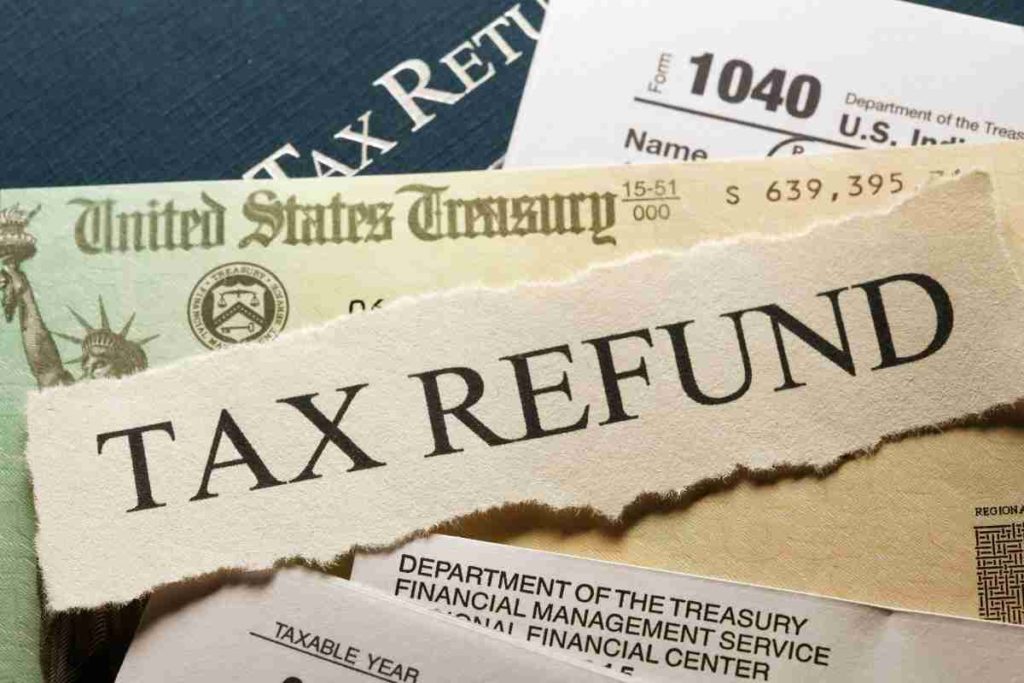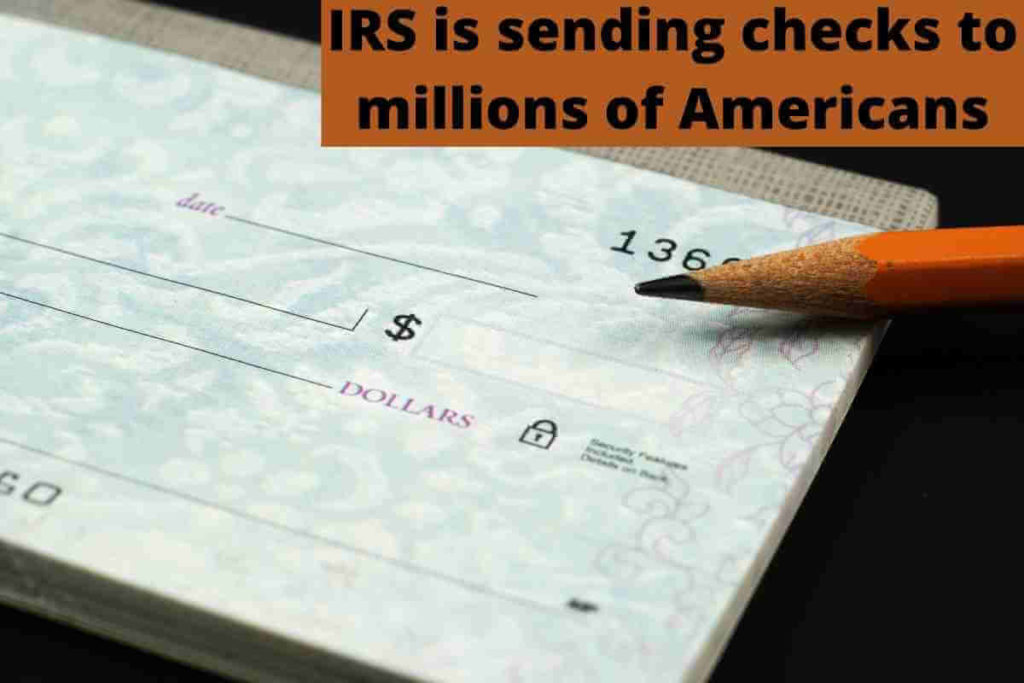Three out of every four taxpayers get a check from the IRS after submitting their tax return, which is a much-anticipated occasion. Tax experts caution, however, that some taxpayers may get a smaller refund this year than in previous years.
According to tax professionals, the enhanced Child Tax Credit is the most significant risk that might affect tax returns. The IRS has not said when it would begin accepting tax returns, although it is generally around the end of January.
Those who have paid more to the IRS than they owe throughout the course of the year are eligible for a tax refund. The shortfall is then paid with a tax refund check from the IRS.
Certain taxpayers may be eligible for tax credits, which are a dollar-for-dollar reduction in the amount you owe the IRS. These subsidies are generally aimed towards certain taxpayer groups, such as parents, students, and low-wage workers.
The Child Tax Credit comes into play here
As part of President Joe Biden’s American Rescue Plan, the Child Tax Credit (CTC) was boosted from $2,000 to $3,600 for children under the age of six and $3,000 for those aged six to seventeen. Despite the higher tax credit, some parents’ tax refunds may be affected when they file their returns.
Because half of the extended CTC was delivered in advance via monthly checks from July to December 2021, parents will be able to claim the other half of the extended CTC on their tax returns before the April 18, 2022 filing deadline. (This year’s filing deadline has been pushed to April 18 due to IRS offices being closed on April 15 for Emancipation Day.)
In other words, instead of getting a $2,000 tax credit for their children, parents will receive $1,500 or $1,800 per kid, depending on their age.
Consider the following scenario for a family with two 8-year-olds and a 10-year-old: The parents will claim a $3,000 tax credit for each of their two children when they submit their taxes (representing half of the $6,000 in tax credits available under the expanded CTC for two children). However, compared to the previous tax year, when they would have claimed $4,000 for their two children, this means they would lose $1,000 in tax credits. According to tax experts, this will result in a lesser tax refund in 2022.
“A lot of people will get refunds, but they won’t be as big as they thought,” Toby Mathis, a tax professional and founding member of Anderson Law Group, said. “Those who are anticipating the whole amount and are unaware that the money they got [in 2021] was a tax credit prepayment will be affected.”
To be sure, according to Mark Steber, Jackson Hewitt’s chief tax information officer, some parents were aware of the issue and elected to skip the monthly prepayments in order to get a higher refund.
“Some people want to get the most out of the tax credit when they file,” Steber said, “or they weren’t sure whether they qualified.” “A handful of people” utilized the IRS website to opt-out of the forward payments.
Certain parents and taxpayers, on the other hand, may be entitled to bigger tax refunds
Following are some scenarios in which people may get higher or fewer tax refunds this year as a consequence of tax policy changes in 2021. There is one big caveat: since tax refunds are based on a number of factors such as income tax rates, tax credits, and deductions like retirement contributions, each tax situation is different.
The CTC has the effect of reducing the refund
Because of the aforementioned reasons, some parents may get a lower CTC tax credit this year when they file their tax returns, lowering their average tax refund.
However, tax experts believe the CTC raises a number of other issues that might eat into a taxpayer’s return. They include those who received greater CTC payments for a child but did not qualify for them.
“This year, a lot of people might be in for a rude awakening,” Christian Cyr, president,, and chief investment officer of Cyr Financial, said.
One of his customers had an 18-year-old kid, but the IRS calculated CTC eligibility for 2020 returns, so the child seemed to be 17 at the time.”They started paying out $1,500 to my client through forwarding tax payments since the IRS didn’t notice or delve into the date of birth,” Cyr said. He inquired, ‘What does that mean?’
According to Cyr, the parent will be responsible for reimbursing the CTC monies that were advanced. To recoup the overpayment, the IRS would lower the amount of a taxpayer’s return.
Similarly, some divorced or shared custody parents may be responsible for restitution if it wasn’t their year to register the child as a dependent. The CTC will be provided to the parent who claims the child as a dependent for the year 2021, and if the other parent got the checks in mistake in 2021, they would be required to return the money.
Parents who have a child born in 2021 will be eligible for a greater refund
Certain people, such as those who welcomed a kid into their family in 2021, are expected to get a higher return in early 2022, according to tax specialists.
This is because the either 2019 or 2020 tax returns establish eligibility for the advanced CTC payments and the third stimulus check (worth $1,400 for each qualifying adult and child). As a consequence, the IRS would not have known about children born in 2021, and advance CTC payments would not have been allocated to them.
On their 2021 tax returns, families with infants or children born, adopted, or fostered in 2021 will be eligible for the entire extended CTC credit, worth $3,600 per kid. According to Jackson Hewitt’s Steber, they should also be entitled to a $1,400 stimulus payment for the child. If all of these steps are followed simultaneously, a family’s tax return might rise by $5,000 per child.
Working parents who entrust their children to a childcare center will get a greater return on their investment.
The Child and Dependent Care Credit, which was extended as part of the American Rescue Plan, is a major tax adjustment that is less well-known than the Child Tax Credit.
Parents could previously claim a tax credit of up to $3,000 per dependent if they hired someone to watch their child while they worked or looked for employment. Under the American Rescue Plan, the credit has been increased to $8,000 per kid; a maximum of $16,000 is available for two dependents.
There are certain drawbacks to this method. The kid must be under the age of 13 or be a person who is unable to care for himself, spends more than half of the year with the taxpayer, and is a dependant. In addition, to be eligible for the tax credit, a parent — In 2021, both parents — or both parents if filing jointly — must have earned some money.
The IRS does not consider all child care costs to be qualified, claiming that the tax credit does not apply to overnight camps or private schools. However, if the relative is not themselves a dependent, paying a relative to care after a child while you or your spouse work is a permissible expense (like an older sibling).
The tax credit will result in a dollar-for-dollar decrease in their tax burden for qualified families. It’s also refundable, which means you’ll receive the difference back on your tax return if the credit exceeds your federal income taxes.
Follow us on Twitter
Also, Read Hamilton Man Pleads Guilty to Embezzlement, Tax Fraud
Contents





